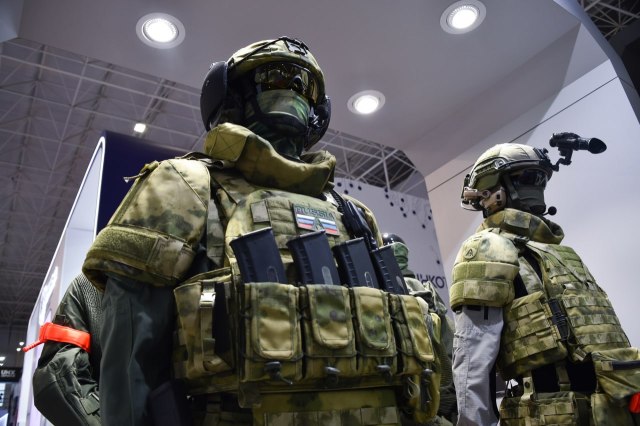Unloading systems help fighters of power units to have everything they need with them, without loading their backs. And their modular nature makes it possible to vary pouches and elements depending on the tasks.
We talk about different types of unloading and what solutions the Kalashnikov Concern offers.
When everything is at hand
The popular image of a modern fighter is such a versatile soldier who has everything he needs not only for fighting, but also for autonomous existence for two or three days. He usually has a backpack, pouches on his chest and belt, pockets on his arms and legs filled with something very important. And, of course, glasses, helmet and other equipment, as well as several types of weapons. It may look beautiful, but it's hard to imagine that such a loaded soldier will be able to move effectively and perform combat tasks.
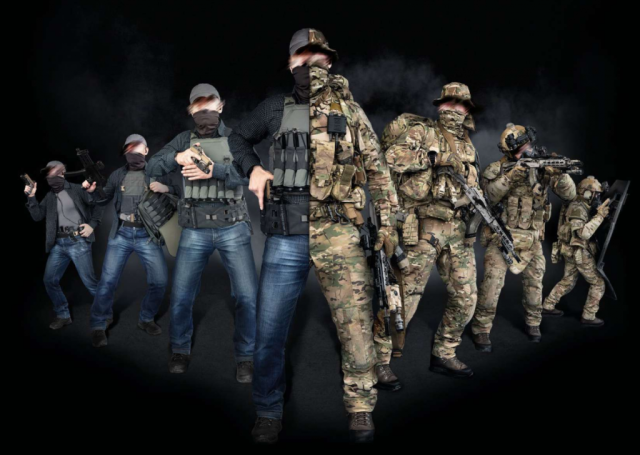 |
| Unloading systems. |
| Source: Triad-TKO |
And yet, a fighter cannot do without a minimum set of things: a first aid kit, communications equipment, a knife, a survival kit, a flashlight, a flask, weapons and a set of ammunition – grenades, magazines. How to have everything you need with you and not get confused where everything lies? To arrange all this evenly and with convenient access helps tactical, aka unloading vest, or unloading.
According to its name, unloading not only frees the hands of the fighter, but also allows you to evenly distribute the weight of ammunition, unloading the spine. The main task of all these numerous pockets and pouches is to give the fastest and easiest access to all ammunition, weapons and ammunition, while not interfering with movement. And one more important point: such unloading should be put on and removed entirely in a matter of seconds, on which the life of a fighter may depend.
How the fighters were unloaded
The historical prototype of unloading can be called, on the one hand, numerous soldiers' bags and backpacks, and on the other hand, a belt and a belt belt, which allowed you to always keep cold or firearms at hand. And this format has not changed for decades. For example, the widespread unloading system of the Soviet motorized rifle of the 1950 model, which was used until the 1980s, just consisted of a belt and a belt belt and allowed carrying a grenade pouch for two grenades, a flask, a sapper shovel, a pouch for three magazines for a Kalashnikov assault rifle and a raincoat tent.
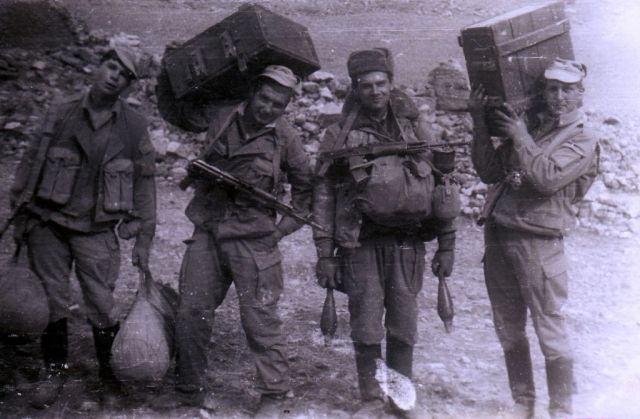 |
| Homemade "unloading" during the Afghan conflict. |
| Source: Rostec |
During the Afghan conflict, the internationalist soldiers had captured Chinese and homemade unloads sewn from parts of canvas backpacks in fashion. In the second half of the 1980s, a new statutory unloading of factory production "Belt A" appeared. It included pockets for AK magazines, pockets for grenades and belt loops for ROP − reactive lighting cartridges. A "Belt B" with pockets for GP-25 or VOG-25 grenades was attached to the unloading by straps. In various modifications, this unloading was used until the 2000s.
In the 21st century, unloading systems are becoming very popular. One of the first offloads for the modern Russian army was the transport universal vest ZhTU 6SH92. A distinctive feature of this vest is two large chest pouches that contained magazines for AK−74, AKM, PKK-74 or PKK. The main set of the 6SH92 includes a basic vest, a belt, a pouch for four magazines, pouches for VOG-25 grenades and a satchel. As an addition, there were pouches for a bowler hat and a gas mask, as well as a case for a sapper shovel. At the same time, there was no regular place for a first aid kit in the kit. The development of the topic was the 6SH117 transport modular vest as part of the "Warrior" equipment, which is supplied to the Russian Army today.
Equipment from A to Z
The Kalashnikov concern has also developed its modular unloading system (MRS), or rather, the Triada−TKO company, which is engaged in clothing and equipment in its composition. The modular nature of the system makes the solution universal, in various combinations suitable for a wide range of tasks of special forces. Thanks to the selection algorithm, the composition of the system adapts to the tasks of operational, assault reconnaissance and universal units. Unloading elements can be combined with bulletproof vests and anti-shatter protection, and the entire range of MPC includes dozens of modules.
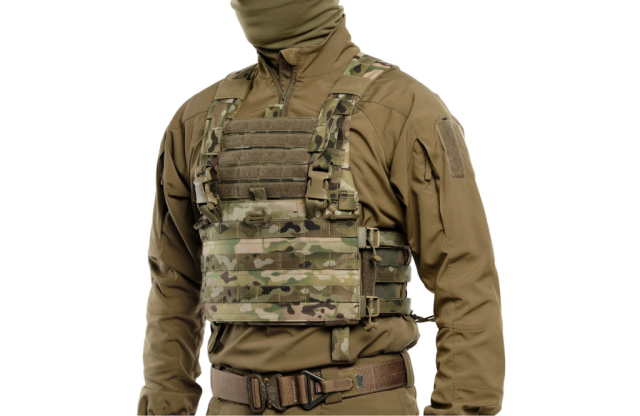 |
| Unloading vest "LDC Standard". |
| Source: Unloading vest "LDC Standard" |
Let's consider one of the chest unloading vests of the Kalashnikov system − the LDC Standard. Thanks to the open back and sides, the vest does not interfere with thermoregulation. Low-profile shoulder straps do not interfere with carrying a backpack. The design of the vest allows you to add a frontal armor panel, and with the help of additional modules – and back armor protection. The product complies with the protection classes Br1 and C2, Br5.
Read about the evolution of bulletproof vests in our material
The vest, without removing it, can be adjusted in volume for a specific set of clothes. You can put on and take off the vest conveniently and quickly with the help of side valve adapters of the fastex type. Quick-release front panel fasteners allow for rapid replacement of the composition of pouches.
Almost all attachments are attached to the vest by means of the MOLLE system, a generally recognized world standard for attaching equipment. Among the unloading modules of the MPC there are magazine pouches, pouches for grenades, radio stations, navigation equipment, gas masks, utility pouches, various medical options and holsters.
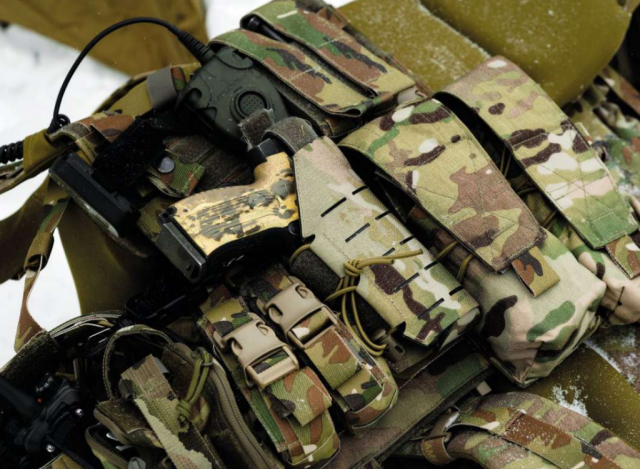 |
| The MPC module. |
| Source: Triad-TKO |
If necessary, the MPC allows you to adapt the equipment to the changing tasks of the fighter in a short time. For example, to switch from a mobile option that does not restrict movements for fast movements to maximum protection when attacking enemy positions. Any modules can be outweighed between a concealed-carry bulletproof vest, an unloading vest and an assault bulletproof vest.
Former and current military specialists took part in the creation of the Kalashnikov modular unloading system. It was developed taking into account the specifics and tactics of the work of Russian special forces. The MPC has been delivered to customers since 2020 and continues to be refined taking into account modern combat operations.
